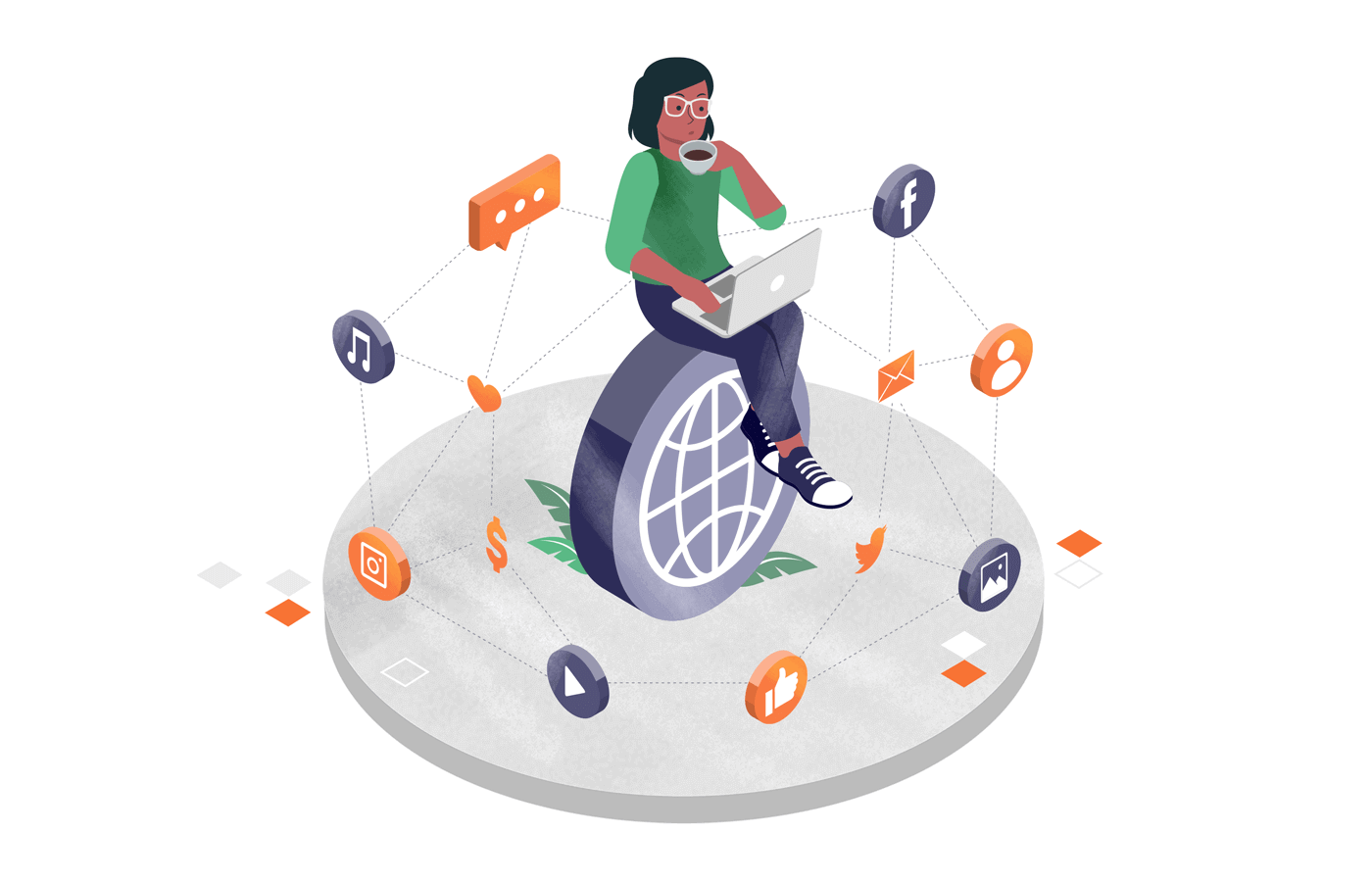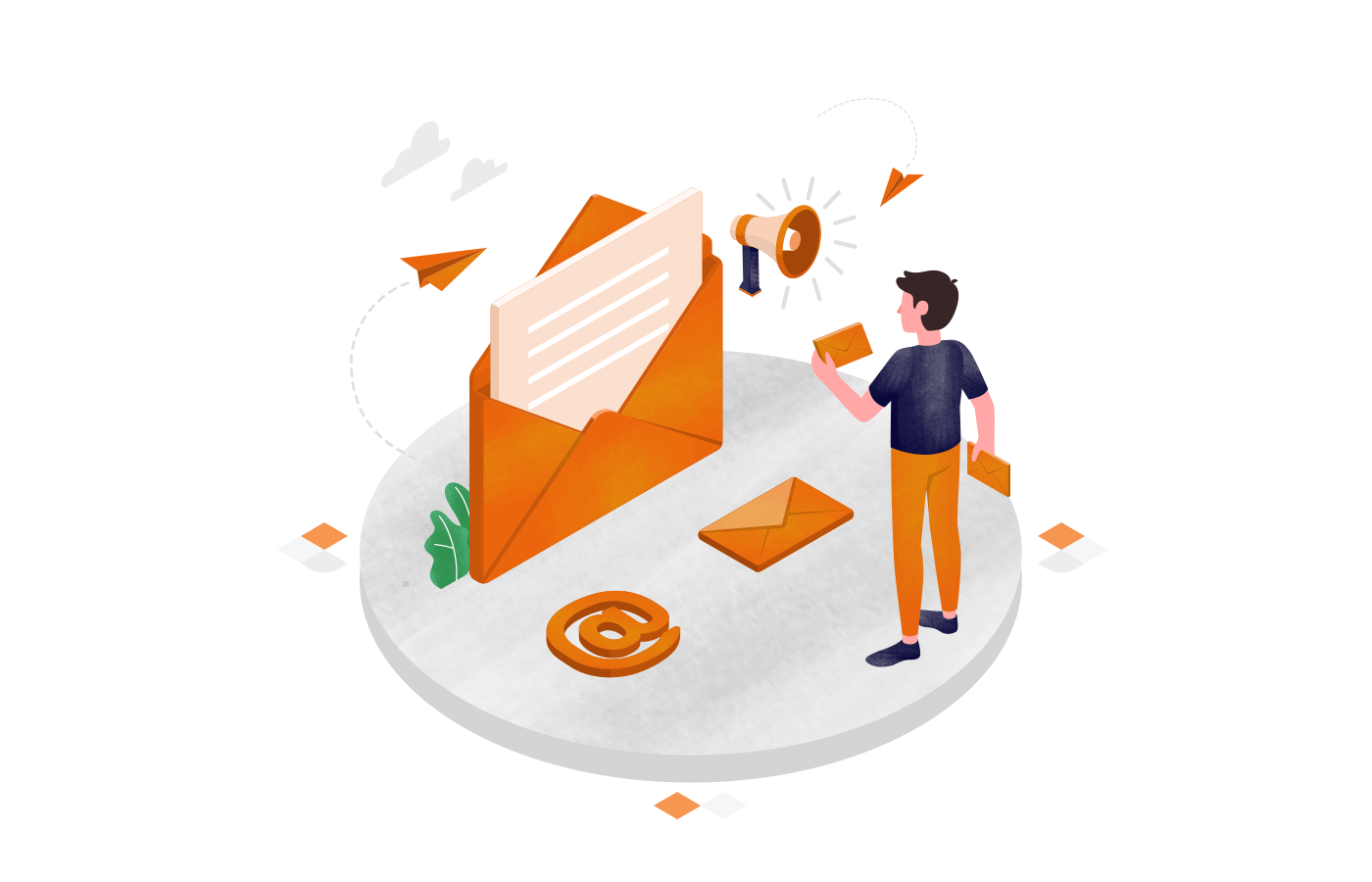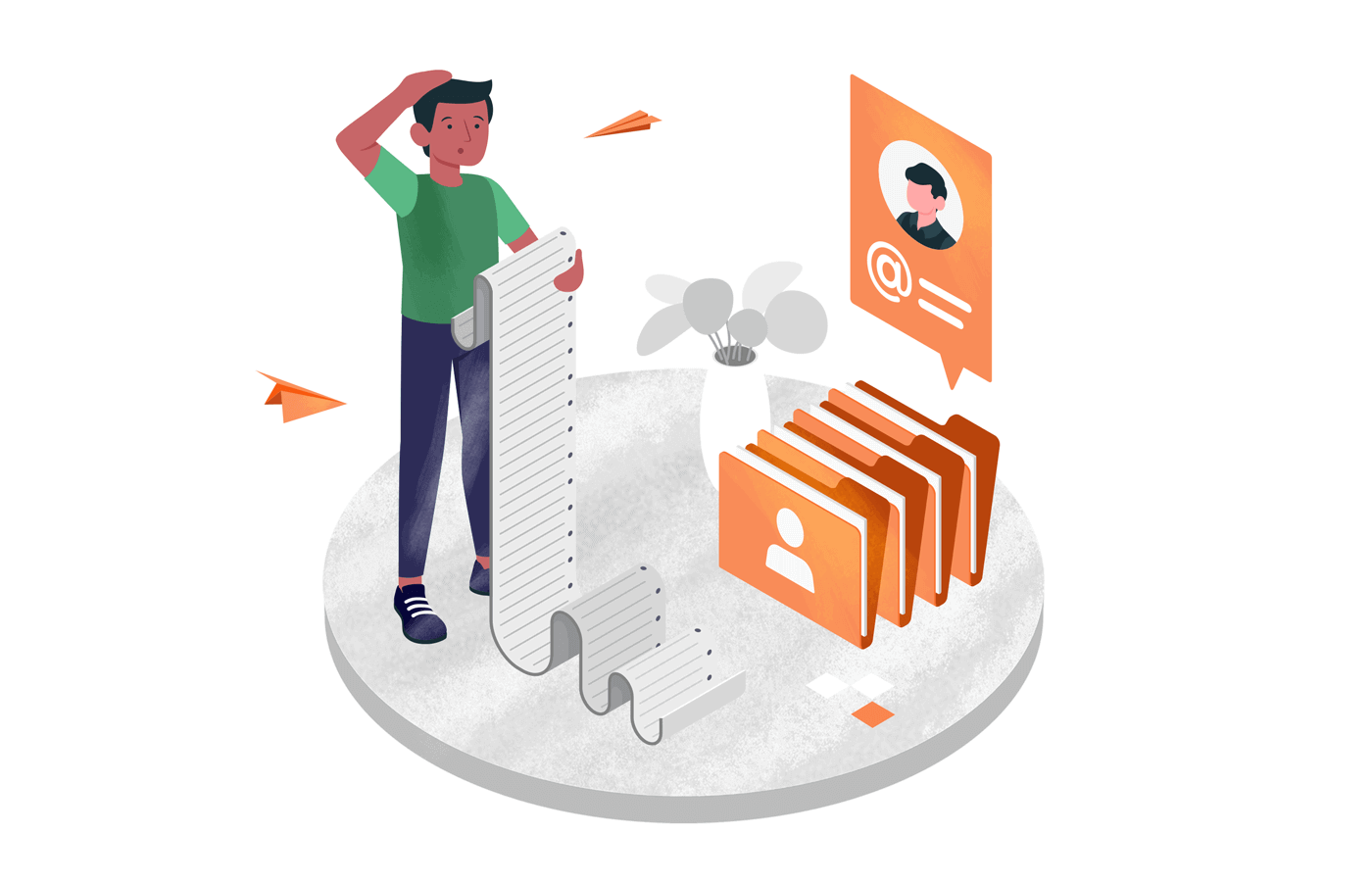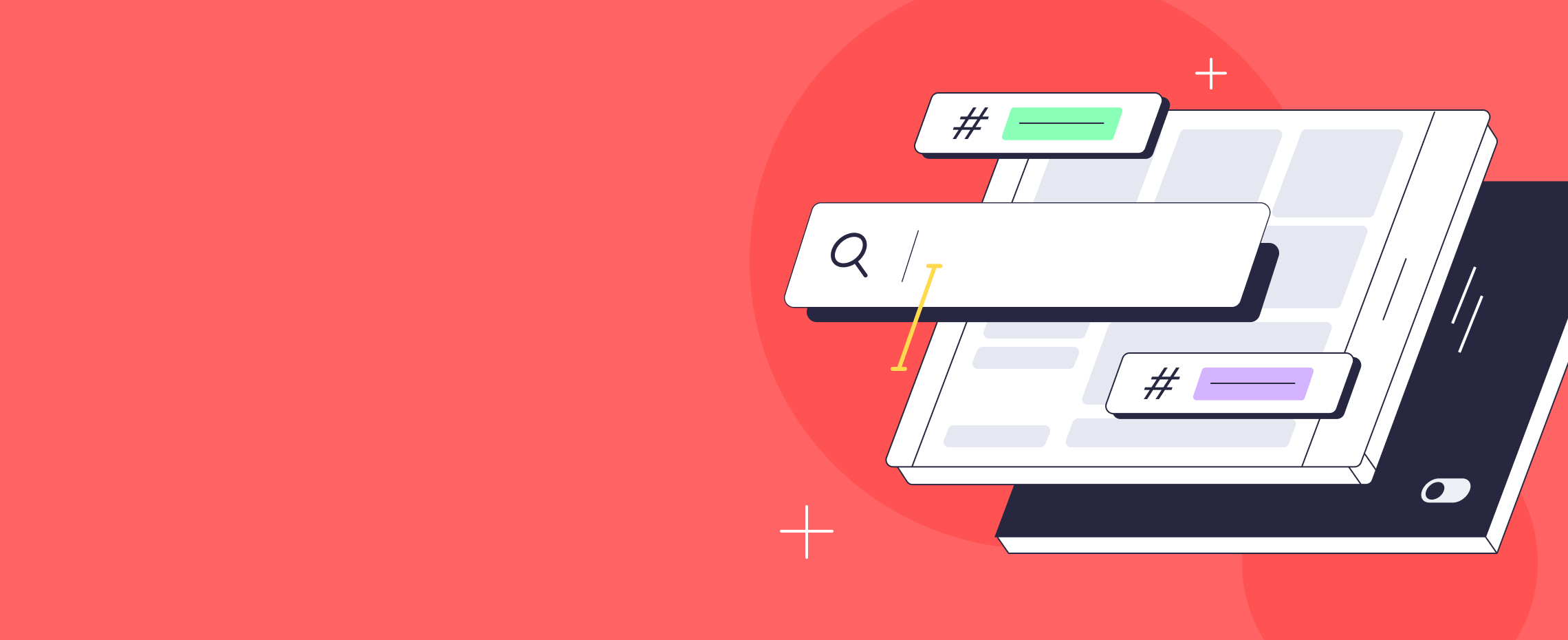Case Studies of Successful Affiliate Marketers: Learning from the Masters
The world of affiliate marketing is brimming with success stories, each offering valuable insights for aspiring affiliates. By studying the strategies and approaches of established names, you can gain a practical understanding of what works and avoid common pitfalls. Let’s delve into three diverse case studies, each showcasing a unique path to affiliate marketing mastery:
Pat Flynn: Building Trust and Transparency
Pat Flynn, founder of the Smart Passive Income blog, is renowned for his authenticity and focus on value creation. He meticulously reviews products he promotes, ensuring they align with his audience’s needs and values. This transparency fosters trust, leading to higher conversion rates and loyal followership. Flynn’s success hinges on these key takeaways:
- Niche Expertise: Choose a niche you’re passionate about and develop deep knowledge to provide valuable insights and recommendations.
- Content-Driven Approach: Create high-quality content that educates and entertains your audience, naturally integrating affiliate links where relevant.
- Transparency and Trust: Be upfront about your affiliate partnerships and only endorse products you genuinely believe in.
Michelle Schroeder-Gardner: Passive Income Powerhouse
Michelle, known as “Making Sense of Cents,” built a multi-million dollar online business primarily through affiliate marketing. Her strategy revolves around creating evergreen content like blog posts and courses, generating ongoing income even after initial creation. Key lessons from Michelle’s journey include:
- Evergreen Content Creation: Focus on content that remains relevant and valuable over time, maximizing its lifespan and earning potential.
- Diversification: Partner with various affiliate programs to mitigate risk and spread your income streams.
- Data-Driven Decisions: Track your results and analyze performance data to refine your strategies and identify opportunities for improvement.
Ryan Robinson: Influencer Marketing Mastermind
Ryan, founder of The Viral List, leverages his social media presence and influencer network to promote affiliate products. He strategically partners with other influencers and micro-influencers to reach wider audiences and build trust through authentic recommendations. Ryan’s approach offers these valuable lessons:
- Community Building: Cultivate a strong community on social media, fostering engagement and trust with your audience.
- Influencer Collaborations: Partner with relevant influencers to expand your reach and leverage their credibility.
- Storytelling and Authenticity: Use storytelling and personal experiences to connect with your audience and make product recommendations more relatable.
Beyond the Case Studies: Universal Success Principles
While each case study presents a unique path, they share some common threads that underpin success in affiliate marketing:
- Passion and Niche Expertise: Be passionate about your niche and develop deep knowledge to become a trusted resource for your audience.
- High-Quality Content Creation: Focus on creating valuable content that educates, entertains, and naturally integrates affiliate links.
- Building Trust and Transparency: Be honest about your affiliate partnerships and only endorse products you genuinely believe in.
- Data-Driven Approach: Track your results and analyze performance data to refine your strategies and identify opportunities for improvement.
- Community Building and Engagement: Cultivate a strong community on social media or your platform to foster trust and engagement with your audience.
- Constant Learning and Adaptation: Stay updated on industry trends, experiment with new strategies, and adapt your approach based on data and audience feedback.
Remember, success in affiliate marketing takes time, effort, and consistent learning. By studying the masters, implementing their key strategies, and tailoring them to your niche and audience, you can establish a thriving affiliate marketing business that delivers value and generates sustainable income.
Additional Tips:
- Build an email list: Capture leads through email opt-ins to nurture relationships and promote affiliate products directly.
- Utilize multiple platforms: Explore various platforms like blogs, social media, YouTube, and email marketing to reach your target audience effectively.
- Comply with FTC regulations: Ensure all affiliate disclosures are clear and comply with FTC regulations to maintain transparency and trust.
By following these steps and learning from the successes of others, you can navigate the exciting world of affiliate marketing and pave your own path to success.
Scaling Your Affiliate Marketing Business: Strategies for Growth and Long-Term Success
The world of affiliate marketing is brimming with opportunity, allowing individuals to build successful businesses by promoting other companies’ products. But transitioning from initial success to sustained growth requires strategic planning and smart execution. This guide delves into essential strategies to help you scale your affiliate marketing business and achieve long-term success.
Building a Strong Foundation:
Before scaling, ensure your business has a solid base. This includes:
- Niche Selection: Narrow your focus to a specific audience and product category. Research industry trends, identify profitable niches, and choose one that aligns with your interests and expertise.
- Content Creation: Develop high-quality content that resonates with your target audience. Blog posts, reviews, tutorials, and social media engagement are crucial for attracting website traffic and building trust.
- Website Optimization: Ensure your website is user-friendly, mobile-responsive, and optimized for search engines. This improves user experience and drives organic traffic.
- Affiliate Partner Selection: Collaborate with reputable brands offering high-quality products, competitive commissions, and reliable tracking systems. Research and carefully choose partners that align with your niche and values.
Strategies for Scaling Up:
Once your foundation is strong, explore these strategies to expand your reach and revenue:
- Diversify Your Income Streams: Don’t rely on a single product or program. Promote products from various brands within your niche to mitigate risk and tap into different audiences.
- Content Expansion: Experiment with different content formats like video reviews, infographics, and webinars. Cater to diverse learning styles and preferences to attract a wider audience.

- Leverage SEO: Optimize your content and website for relevant keywords to improve organic search ranking and attract free, targeted traffic.
- Paid Advertising: Consider pay-per-click (PPC) advertising platforms like Google Ads and Facebook Ads to reach a wider audience beyond organic reach. Target specific demographics and interests for higher conversion rates.
- Email Marketing: Build an email list and nurture leads with valuable content and exclusive offers. Email marketing fosters engagement and drives repeat purchases.
- Social Media Engagement: Actively engage with your audience on relevant social media platforms. Share valuable content, participate in discussions, and run contests to build brand awareness and community.
- Influencer Marketing: Partner with relevant influencers in your niche to promote your affiliate products. Their endorsement can reach a wider audience and boost conversions.
- Utilize Data Analytics: Track your website traffic, conversion rates, and affiliate program performance. Analyze data to identify what’s working and adjust your strategies for better results.
- Build Strategic Partnerships: Collaborate with other affiliate marketers, bloggers, or businesses in complementary niches. Cross-promotion and joint ventures can expand your reach and audience effectively.
- Invest in Automation: Use tools and software to automate repetitive tasks like email marketing, social media scheduling, and data analysis. This frees up your time for strategic planning and content creation.
- Stay Up-to-Date: The affiliate marketing landscape is dynamic. Keep learning about industry trends, new platforms, and effective marketing strategies to adapt and stay ahead of the curve.

Remember:
- Scalability is a journey, not a destination: Be patient, focus on consistent improvement, and celebrate incremental milestones.
- Quality over quantity: Prioritize the quality of your content and audience engagement over simply accumulating affiliate links.
- Transparency and trust: Build trust with your audience by providing honest reviews, disclaimers, and valuable information.
- Compliance and legal considerations: Stay informed about affiliate marketing regulations and comply with all legal requirements.
By implementing these strategies and remaining dedicated to continuous learning and improvement, you can successfully scale your affiliate marketing business and achieve long-term success in this exciting and rewarding field.
Building Trust and Authority: Establishing Yourself as a Credible Affiliate Marketer
In the bustling world of affiliate marketing, standing out amongst the crowd and earning the trust of your audience is vital for success. While promoting exciting products and services can be tempting, it’s authenticity and credibility that truly convert clicks into commissions. This guide sheds light on key strategies to build trust and establish yourself as a reliable voice in your niche, attracting loyal followers and boosting your affiliate marketing game.
The Cornerstone of Success: Transparency and Honesty
The foundation of trust lies in transparency. Disclose affiliate partnerships clearly and be upfront about any potential commissions you might earn. Avoid misleading or exaggerated claims, focusing on genuine experiences and honest product assessments. Remember, your audience values your opinion and expects reliable information, not just a sales pitch.
Content is King: Value Comes First, and Promotion Follows
Don’t simply bombard your audience with affiliate links. Craft valuable content that resonates with their interests and needs. Create informative blog posts, engaging videos, or insightful social media shares that genuinely educate and empower your audience. When trust is established, recommending relevant products seamlessly integrates into your content, offering solutions rather than feeling forced.

Become an Expert in Your Niche: Knowledge is Power
Investing in knowledge about your chosen niche is key. Conduct thorough research, stay updated on trends, and demonstrate your expertise through your content. Whether it’s in-depth product reviews, comparisons, or insightful tutorials, showcase your understanding and ability to guide your audience effectively.
Embrace Authenticity: Be Yourself, Connect with Your Audience
People connect with genuine personalities. Share your experiences, both positive and negative, with the products you promote. Inject your unique voice and perspective into your content, fostering a sense of connection and relatability with your audience. This authenticity builds trust and encourages engagement, making your recommendations more impactful.
Community Building: Foster Relationships, Not Just Sales
Don’t treat your audience as mere sales targets. Engage in genuine conversations, respond to comments, and actively participate in discussions. Encourage open dialogue, answer questions honestly, and address concerns promptly. Building a community fosters trust and loyalty, turning one-time visitors into repeat customers and long-term advocates.
Social Proof: Leverage Testimonials and Reviews
Showcasing positive experiences from others strengthens your credibility. Feature customer testimonials, case studies, or positive reviews on your website or social media. This social proof validates your recommendations and provides potential customers with real-world insights, increasing their confidence in your suggestions.
Go Beyond the Sale: Offer Ongoing Value
Don’t disappear after a sale. Provide ongoing support, offer troubleshooting tips, and share valuable updates about the products you promote. This consistent post-sale care demonstrates your commitment to your audience’s success, solidifying trust and encouraging future purchases.

Collaboration is Key: Partner with Other Credible Voices
Team up with other influencers or experts in your niche. Joint webinars, guest posts, or co-created content can expand your reach and tap into new audiences. Choose partners who share your values and credibility, ensuring the collaborations enhance your reputation and provide genuine value to your audience.
Data-Driven Decisions: Track and Analyze Your Performance
Monitor your affiliate marketing efforts. Track key metrics like click-through rates, conversion rates, and customer engagement. Analyze the data to understand what resonates with your audience and refine your strategies accordingly. This data-driven approach optimizes your content and ensures your recommendations continue to deliver value and drive results.
Remember, Building Trust Takes Time and Commitment
Earning trust doesn’t happen overnight. It requires consistent effort, transparency, and a genuine desire to help your audience. By implementing these strategies, you can transform from an anonymous affiliate into a trusted advisor, establishing a loyal following and paving the way for sustainable success in the ever-evolving landscape of affiliate marketing.
Performance Tracking and Optimization: Measuring Your Affiliate Marketing Success and Making Adjustments
In the dynamic world of affiliate marketing, success hinges on one crucial factor: performance. But how do you measure success amidst a complex web of clicks, conversions, and commissions? And more importantly, how do you optimize your campaigns to consistently drive results? This guide delves into the essential metrics of affiliate marketing, offering a roadmap for tracking, analyzing, and optimizing your efforts for maximum impact.
Unveiling the Metrics: Your Performance Barometer
Think of metrics as the instruments on your affiliate marketing dashboard, each offering a distinct reading on your campaign’s health. Here are the key players:
- Clicks: The basic building block, representing the number of times users interact with your affiliate links. A high click-through rate (CTR) indicates effective promotion, but remember, clicks alone don’t guarantee conversions.
- Conversions: The holy grail, signifying when a click leads to a desired action, such as a purchase, signup, or download. Conversion rate, calculated by dividing conversions by clicks, reveals the effectiveness of your landing page and offer.
- Average Order Value (AOV): This metric reveals the average amount spent per conversion, offering insights into profitability and potential upselling opportunities.
- Commission Rate: The percentage of the sale you earn as an affiliate, directly impacting your revenue. Understanding different commission structures and negotiating favorable rates is crucial.
- Return on Investment (ROI): The ultimate measure of success, calculated by dividing your earnings by your investment (time, effort, resources). A positive ROI signifies a campaign is generating profit.
Bonus Metrics:
- Customer Lifetime Value (CLV): Measures the total revenue a customer generates over their relationship with the merchant, offering insights into the long-term impact of your acquired customers.
- Engagement Metrics: Track metrics like product usage, upsell rate, and churn rate to assess customer engagement and loyalty driven by your affiliate efforts.

Putting the Data to Work: Analyzing and Optimizing
Data is powerful, but only when analyzed and translated into actionable insights. Here’s how to turn your metrics into optimization fuel:
- Identify Trends: Use tools and reports to analyze trends across different channels, demographics, and timeframes. Uncover what’s working and what’s not to prioritize optimization efforts.
- A/B Testing: Experiment with different creatives, landing pages, and promotional strategies to see what resonates best with your audience. Data-driven testing helps you refine your approach for better results.
- Affiliate Partner Performance: Analyze the performance of individual affiliates to identify top performers and areas for improvement. Provide feedback and collaborate with high-performing partners to further maximize results.
- Content Optimization: Analyze engagement metrics on your own promotional content (blog posts, social media) to understand what resonates and adapt your approach for better conversion potential.
Beyond the Numbers: The Human Touch
While metrics are vital, don’t underestimate the power of understanding your target audience. Conduct market research, engage with your audience directly, and leverage audience insights to tailor your approach for better engagement and conversion.
Remember, Optimization is a Journey, Not a Destination
Affiliate marketing is an ongoing process of experimentation, adaptation, and continuous improvement. By consistently tracking your performance, analyzing data, and implementing strategic adjustments, you can ensure your affiliate efforts remain optimized for success in the ever-evolving digital landscape.
Additional Tips:
- Stay updated: The affiliate marketing landscape is constantly evolving. Embrace new technologies, trends, and best practices to stay ahead of the curve.
- Build strong relationships: Foster genuine connections with your affiliate partners. Collaboration and open communication are key to mutual success.
- Don’t be afraid to experiment: Trying new approaches and testing different strategies is crucial for discovering what works best for your unique audience and campaigns.
By following these guidelines and adapting them to your specific niche and goals, you can transform your affiliate marketing efforts into a powerful engine for driving sustainable growth and success. Remember, the journey to affiliate marketing mastery is paved with data, optimization, and the human touch. Start measuring, analyze strategically, and watch your affiliate campaigns flourish!
Investing 101 for Beginners: Making Your Money Work for You in the Digital Age
Welcome to the exciting world of investing! Whether you’re a young adult dipping your toes in for the first time or someone looking to refresh your knowledge in the digital age, this guide will equip you with the fundamentals to kickstart your investment journey.
Gone are the days of dusty stock certificates and intimidating financial jargon. The digital age has democratized investing, making it more accessible and user-friendly than ever before. With the right knowledge and tools, you can put your money to work for you, building wealth and achieving your financial goals.
Why Invest?
Investing isn’t just about getting rich quick. It’s about taking control of your future and growing your wealth over time. Here are some key reasons why you should consider investing:
- Beat inflation: Over time, inflation erodes the purchasing power of your money. Investing allows you to potentially outpace inflation, ensuring your money retains its value.
- Achieve financial goals: Whether it’s a dream vacation, a comfortable retirement, or a down payment on a house, investing can help you reach your long-term financial objectives.
- Compound interest: This is the magic of investing! Your money earns interest, which then earns interest on itself, creating a snowball effect that can significantly grow your wealth over time.
Understanding the Basics:
Before diving in, let’s clarify some key terms:
- Asset: An investment that holds value, such as stocks, bonds, real estate, or commodities.
- Liability: A debt you owe, like a loan or credit card balance.
- Risk: The possibility of losing money on your investment.
- Return: The profit you earn on your investment, expressed as a percentage.
:max_bytes(150000):strip_icc()/4243163-v1-05dfe20436f042999666243640fd84cd.png)
Different Investment Types:
The investment landscape offers a variety of options, each with its own risk and return profile. Here are some of the most common:
- Stocks: Represent ownership in a company. They offer potentially high returns but also carry higher risk.
- Bonds: Loans you make to governments or corporations. They offer lower risk and predictable returns but typically lower growth potential.
- Mutual funds: Pooled investments managed by professionals, offering diversification and ease of access.
- Exchange-traded funds (ETFs): Similar to mutual funds, but trade like stocks on exchanges.
- Real estate: Investing in physical properties can generate rental income and potential appreciation.
- Alternative investments: Options like commodities, cryptocurrency, and peer-to-peer lending offer diversification but can be complex and risky.
Investing in the Digital Age:
Technology has revolutionized the way we invest. Here are some of the advantages:
- Online platforms: Easy access to investment information, tools, and trading platforms.
- Fractional shares: Invest in high-priced stocks with smaller amounts of money.
- Robo-advisors: Automated investment management services for a fee.
- Mobile apps: Monitor your portfolio and make trades on the go.

Getting Started:
- Define your goals: What do you want to achieve with your investments? This will guide your choices.
- Assess your risk tolerance: How comfortable are you with potential losses? Choose investments that align with your risk appetite.
- Start small: Don’t jump in with all your savings. Start with a manageable amount and gradually increase as you gain experience.
- Do your research: Understand the different investment options and their risks and returns before committing.
- Diversify: Don’t put all your eggs in one basket. Spread your investments across different asset classes to mitigate risk.
- Invest regularly: Consistency is key. Set up automatic investments to build wealth over time.
- Seek professional advice: If you’re unsure, consult a financial advisor for personalized guidance.
Remember:
- Investing is a long-term game. Don’t expect overnight riches.
- Be patient and disciplined. Stick to your plan and avoid emotional decisions.
- Don’t be afraid to ask questions. There’s no shame in seeking help to make informed decisions.
- Be wary of scams and get-rich-quick schemes.
Paid Advertising for Affiliate Marketing: Leveraging PPC and Social Media Ads for Targeted Reach
Affiliate marketing thrives on reaching the right audience at the right time with the right offer. While organic traffic builds over time, paid advertising injects rocket fuel into your outreach efforts, propelling you towards greater visibility and conversions. This guide explores the exciting world of paid advertising for affiliate marketing, focusing on two key players: Pay-Per-Click (PPC) and social media advertising.
Why Go Paid?
Organic traffic takes time and consistent effort to cultivate. With paid advertising, you gain immediate access to a vast pool of potential customers actively searching for products or services. Here are some key advantages:
- Targeted Reach: Precisely define your ideal audience based on demographics, interests, and online behavior, ensuring your message resonates with those most likely to convert.
- Faster Results: Get your affiliate offers in front of relevant eyes quickly, accelerating your path towards generating sales and commissions.
- Data-Driven Decisions: Track key metrics like clicks, conversions, and return on investment (ROI) to optimize your campaigns and maximize profitability.
- Scalability: Easily adjust your budget and target audience as needed, allowing you to experiment and expand your reach efficiently.
Choosing Your Weapons: PPC vs. Social Media Ads
PPC: Short for “pay-per-click,” PPC platforms like Google Ads and Bing Ads offer laser-focused targeting. You create ads based on relevant keywords, and each time someone clicks on your ad, you incur a fee. PPC shines in driving targeted traffic to specific landing pages or product pages with clear conversion goals.
Social Media Ads: Platforms like Facebook, Instagram, and YouTube offer powerful targeting options based on demographics, interests, and even specific behaviors. You can leverage various ad formats like images, videos, and carousel ads to capture attention and engage potential customers with a more creative approach. Social media ads excel in brand awareness, building communities, and generating leads for nurturing.

Building Your Paid Advertising Arsenal
Campaign Planning:
- Define your goals: Are you aiming for immediate sales, building brand awareness, or generating leads?
- Know your audience: Research your target demographic and their online behavior.
- Choose your platform: Match your goals and audience with the strengths of each platform.
- Select relevant keywords: For PPC, identify high-performing keywords your target audience is searching for.
Building Compelling Ads:
- Craft enticing headlines and descriptions: Capture attention and clearly communicate your offer’s value.
- Use high-quality visuals: Eye-catching images and videos can significantly boost engagement.
- Highlight your unique selling proposition: Stand out from the competition and showcase what makes your offer special.
- Include strong calls to action: Tell viewers what you want them to do next, whether it’s visiting your website or clicking your affiliate link.
Optimizing for Success:
- Track key metrics: Monitor clicks, conversions, and ROI to gauge campaign performance.
- A/B test different ad variations: Experiment with headlines, visuals, and calls to action to see what resonates best.
- Refine your targeting: Adjust demographics, interests, and keywords based on performance data.
- Stay compliant: Adhere to the platform’s advertising policies and affiliate program guidelines.

Beyond the Basics: Advanced Strategies
- Retargeting: Reconnect with users who have previously interacted with your ads or website, increasing conversion chances.
- Influencer marketing: Partner with relevant social media influencers to reach a wider audience and leverage their credibility.
- Native advertising: Blend your ads seamlessly with the platform’s content for a more natural and engaging experience.
- Dynamic product ads: Automatically generate personalized ads based on your product feed, showcasing relevant offers to each individual user.
Paid Advertising: A Powerful Tool, Wielded with Responsibility
Remember, paid advertising is an investment. Start small, test different approaches, and continuously optimize your campaigns based on data and results. By leveraging PPC and social media ads effectively, you can propel your affiliate marketing efforts to new heights, reaching the right audience with the right message at the right time. Ultimately, responsible and strategic use of paid advertising can unlock a world of possibilities, empowering you to turn clicks into conversions and commissions.
Email Marketing for Affiliate Marketers: Building Your List and Nurturing Leads
In the fast-paced world of affiliate marketing, standing out from the crowd can be a daunting task. While social media, SEO, and paid advertising all play crucial roles, building a strong email list and nurturing your leads through strategic email marketing can be your secret weapon for success. This guide delves into the essential aspects of email marketing for affiliate marketers, equipping you to build a loyal audience and drive lucrative commissions.
Building Your Email List: The Foundation of Success
Before crafting captivating emails, you need a foundation: your subscriber list. Here’s how to attract and retain valuable subscribers:
- Offer Valuable Incentives: People won’t subscribe just for another generic newsletter. Provide exclusive content like discounts, early access to sales, or downloadable resources relevant to your niche.
- Leverage Lead Magnets: Create high-quality resources like ebooks, checklists, or cheat sheets that solve specific problems your target audience faces. Offer these resources in exchange for email addresses.
- Optimize Your Website: Integrate clear opt-in forms on your website, landing pages, and blog posts. Use persuasive CTAs and highlight the benefits of subscribing.
- Run Contests and Giveaways: Host exciting contests or giveaways with email sign-up as an entry requirement. This attracts new subscribers while increasing engagement.
- Partner with Other Affiliates: Collaborate with non-competing affiliates in your niche to cross-promote each other’s lead magnets and newsletters, expanding your reach.
Remember: Always comply with anti-spam regulations and obtain explicit consent before adding anyone to your list.

Nurturing Leads and Driving Conversions: The Art of Effective Email Marketing
Once you have subscribers, it’s time to turn them into loyal customers. Here’s how to nurture your leads through email marketing:
- Segmentation is Key: Divide your list into segments based on interests, demographics, or purchase history. This allows you to personalize emails and cater to specific needs.
- Content is King (and Queen): Craft engaging and informative content that provides value beyond just promoting products. Offer industry insights, educational tips, and entertaining stories.
- Storytelling Sells: Connect with your audience on an emotional level through compelling storytelling. Share personal experiences, customer testimonials, and product success stories.
- Use a Compelling Call to Action (CTA): Tell your subscribers what you want them to do next, whether it’s visiting a product page, signing up for a webinar, or making a purchase.
- Track and Analyze Results: Use email marketing software to track key metrics like open rates, click-through rates, and conversions. Analyze data to refine your strategy and improve results.
- Automate Workflows: Leverage automation tools to send welcome emails, birthday greetings, abandoned cart reminders, and other triggered emails that nurture leads without manual effort.
Remember: Always be transparent about your affiliate partnerships and disclose sponsored content clearly. Build trust with your audience by focusing on providing value first and promotions second.

Advanced Techniques for Maximum Impact:
- Personalization: Go beyond basic segmentation and utilize dynamic content to personalize emails based on individual subscriber preferences and behavior.
- Video Email Marketing: Incorporate short video snippets in your emails to boost engagement and increase click-through rates.
- A/B Testing: Experiment with different subject lines, email formats, and CTAs to optimize your campaigns for maximum impact.
- Webinar Marketing: Host educational webinars to showcase your expertise and generate leads before promoting relevant affiliate products.
- Influencer Partnerships: Collaborate with influencers in your niche to promote your affiliate products through their email lists, increasing your reach and credibility.
Conclusion: Email Marketing – Your Partner in Affiliate Success
Building an email list and nurturing leads through strategic email marketing takes time and effort, but the rewards are significant. By following these guidelines and continuously refining your approach, you can turn your email marketing into a powerful tool for building relationships, driving conversions, and achieving sustainable success in affiliate marketing. Remember, the key lies in providing value, building trust, and offering solutions that genuinely help your audience. By doing so, you’ll cultivate loyal subscribers who are more likely to convert and become your long-term partners in success.
Content Marketing Strategies for Affiliate Success: Attracting Organic Traffic and Converting Visitors
In the ever-evolving landscape of affiliate marketing, content reigns supreme. It’s the bridge between your audience and the products you promote, building trust, establishing authority, and ultimately driving conversions. But crafting compelling content that attracts organic traffic and converts visitors into buyers requires strategic planning and execution. This guide dives into actionable content marketing strategies to propel your affiliate success:
Know Your Niche and Audience:
The foundation of effective content starts with understanding your niche and target audience. Who are you trying to reach? What are their needs, pain points, and interests? What type of content resonates with them? By conducting thorough audience research, you can tailor your content to address their specific desires and motivations.
Content Variety is Key:
Don’t get stuck in a rut! Experiment with different content formats to cater to diverse audience preferences and SEO algorithms. Consider:
- Blog posts: In-depth articles offering valuable information, reviews, comparisons, and tutorials related to your niche and affiliate products.
- Video content: Engaging product demos, explainer videos, and interviews with experts can grab attention and showcase products in action.
- Social media posts: Share informative snippets, eye-catching visuals, and interactive polls to drive engagement and traffic to your main content.
- Infographics and ebooks: Visually appealing summaries of complex topics or exclusive guides featuring your affiliate products can attract leads and build trust.
- Email marketing: Stay connected with your audience through targeted email campaigns featuring product recommendations, personalized offers, and valuable content updates.

Quality is King:
Creating high-quality content goes beyond just keyword stuffing. Focus on:
- Providing value: Offer insights, solve problems, and educate your audience. Don’t just sell, provide genuine value first.
- Authenticity and transparency: Be genuine in your recommendations and disclose affiliate partnerships clearly. Build trust with your audience.
- SEO optimization: Utilize relevant keywords naturally within your content for better search engine visibility.
- Compelling visuals: High-quality images, infographics, and videos enhance user experience and engagement.
- Call to action (CTA): Clearly tell your audience what you want them to do next, whether it’s clicking an affiliate link, subscribing to your list, or sharing your content.
Organic Traffic Strategies:
Attracting organic traffic is crucial for long-term success. Here’s how:
- SEO optimization: Implement keyword research, optimize title tags and meta descriptions, and build backlinks to improve your website’s ranking in search engine results pages (SERPs).
- Content promotion: Share your content on social media, relevant online communities, and forums to reach a wider audience.
- Guest blogging: Contribute valuable content to other websites in your niche to gain exposure and backlinks.
- Leverage social media: Engage with your audience, participate in relevant discussions, and use social media advertising for targeted reach.

Conversion Optimization Techniques:
Turn those clicks into conversions with these methods:
- Strong CTAs: Use clear, actionable language in your CTAs to guide users to the desired action (e.g., “Buy now,” “Learn more,” “Subscribe”).
- Strategic placement: Position your CTAs strategically within your content, often at the end or alongside product mentions.
- Scarcity and urgency: Create a sense of urgency with limited-time offers or limited quantities to encourage immediate action.
- Testimonials and social proof: Showcase positive customer reviews and social proof to build trust and credibility.
- Optimize user experience: Ensure a smooth and user-friendly experience across all devices to avoid drop-offs.
Tracking and Measurement:
Data is your friend! Track your content performance to see what’s working and what needs improvement. Utilize tools like Google Analytics to understand traffic sources, user behavior, and conversion rates. Continuously A/B test different elements to optimize your content for maximum impact.
Remember:
Building a successful affiliate marketing strategy takes time, dedication, and consistent effort. By focusing on creating high-quality, valuable content, attracting organic traffic, and implementing effective conversion techniques, you can turn your website into a powerful revenue generator. Always prioritize your audience’s needs, remain transparent in your approach, and adapt your strategies based on data-driven insights. By following these steps and staying informed about the evolving affiliate marketing landscape, you can pave the way for lasting success.
Choosing the Right Affiliate Programs: Matching Your Niche and Audience for Profitability
In the vibrant world of affiliate marketing, success hinges on one crucial factor: choosing the right affiliate programs. While shiny commission rates might lure you in, lasting profitability lies in a deeper understanding of your niche and audience. This guide unravels the secrets to matching your unique space with programs that resonate with your audience, leading to conversions and a thriving affiliate business.
Know Your Niche Like Your Best Friend:
Before diving headfirst, take a moment to introspect:
- What are you passionate about? Whether it’s fitness, fashion, finance, or anything in between, passion fuels authenticity and attracts a genuine audience.
- What expertise do you possess? Leverage your knowledge and experience to offer valuable insights and recommendations your audience trusts.
- What problems do you solve? Identify the challenges your audience faces and seek programs that offer solutions you genuinely believe in.
Remember, your niche is more than just a label; it’s your community, your voice, and your foundation for building trust.

Understanding Your Audience: More Than Just Numbers:
Your audience is the lifeblood of your affiliate marketing efforts. Delving into their demographics, interests, and pain points is crucial:
- Who are they? Age, gender, location, and online behavior paint a picture of your target audience.
- What are their needs and desires? What motivates them? What challenges do they face? What solutions do they seek?
- Where do they hang out online? Understanding their preferred platforms (websites, social media, forums) helps you reach them effectively.
By truly understanding your audience, you can select programs that align with their needs and values, fostering trust and driving clicks and conversions.
Matching Your Niche and Audience with Perfect Programs:
Now comes the magic: aligning your niche and audience with the right programs. Consider these key factors:
- Relevance: Is the program’s product or service directly relevant to your niche and audience’s needs? Promoting irrelevant products erodes trust and generates no conversions.
- Quality: Does the program offer high-quality products or services? Aligning with reputable brands builds trust and encourages higher conversion rates.
- Commission structure: Explore various commission structures (fixed amount, tiered, lifetime) and choose one that best aligns with your niche and audience’s purchase behavior.
- Promotional materials: Does the program offer high-quality marketing materials like banners, product descriptions, and social media assets? Effective tools make promoting easier and more impactful.
- Track record: Research the program’s track record and affiliate reviews. Look for consistent payouts, transparent communication, and positive affiliate experiences.
Remember, you’re building a long-term partnership, not a quick buck. Choose programs you genuinely believe in and can confidently promote to your audience.

Beyond the Basics: Pro Tips for Affiliate Success:
- Diversify your portfolio: Don’t rely on a single program or product. Spread your risks and cater to different audience segments within your niche.
- Content is king: Create valuable content (reviews, blog posts, tutorials) that showcases the value of the affiliate products and organically integrates them into your audience’s journey.
- Transparency is key: Be upfront about your affiliate partnerships and disclose your commissions. Building trust fosters lasting relationships with your audience.
- Track and analyze: Monitor your affiliate performance to understand what works and what doesn’t. Continuously optimize your efforts for better results.
By diligently matching your niche and audience with the right programs, coupled with these pro tips, you can unlock the true potential of affiliate marketing and build a sustainable, profitable business. Remember, success lies in authenticity, trust, and offering genuine value to your audience. Happy affiliating!
Measuring the ROI of AI Marketing: Quantifying the Value of Your AI Investments
In the ever-evolving landscape of digital marketing, Artificial Intelligence (AI) has emerged as a transformative force. From ad targeting and content creation to customer analysis and campaign optimization, AI promises to streamline processes, unlock new possibilities, and ultimately, boost your marketing ROI. But amidst the hype and excitement, a crucial question remains: how do you measure the actual value of your AI investments?
Beyond the Buzzwords: Defining AI Marketing ROI
Before diving into metrics, let’s clarify what we mean by AI Marketing ROI. It’s more than just calculating the financial returns on your AI expenditure. It’s about quantifying the overall impact of AI on your marketing performance, considering both tangible (financial) and intangible benefits. These intangible benefits may include:
Increased efficiency and productivity: AI automates repetitive tasks, freeing up your team to focus on strategic initiatives.
Improved customer engagement and personalization: AI tailors experiences to individual preferences, leading to higher satisfaction and loyalty.
Enhanced decision-making: AI-powered insights guide data-driven marketing strategies, optimizing campaigns for better results.
Choosing the Right Metrics: A Multi-Faceted Approach
Measuring AI Marketing ROI requires a multi-faceted approach that goes beyond a single metric. Here are some key areas to consider:

- Financial Metrics:
Increased revenue: Track the direct impact of AI-driven campaigns on sales, conversions, and average order value.
Reduced costs: Quantify savings achieved through AI-powered automation, like ad management or content creation.
Improved return on ad spend (ROAS): Measure how efficiently AI optimizes campaigns to convert clicks into paying customers.
- Customer Engagement Metrics:
Click-through rates (CTRs): Track how AI personalizes content and ads for improved user engagement.
Website bounce rates: Monitor how AI-powered website chatbots or recommendations reduce visitor drop-off.
Social media engagement: Analyze how AI optimizes content and interactions for increased brand awareness and loyalty.
- Brand and Reputation Metrics:
Net Promoter Score (NPS): Track customer satisfaction and brand perception impacted by AI-driven experiences.
Brand mentions and sentiment analysis: Monitor how AI affects online conversations and brand perception.
Website traffic and brand searches: Analyze how AI-powered SEO and content marketing strategies impact overall online visibility.
- Operational Efficiency Metrics:
Time saved on manual tasks: Quantify the time AI frees up for your marketing team to focus on strategic initiatives.
Improved campaign turnaround times: Measure how AI streamlines campaign deployment and optimization.
Reduced errors and human bias: Track how AI ensures accuracy and consistency in data-driven decision-making.
Remember: Isolating the sole impact of AI can be challenging, as marketing efforts often involve multiple factors. Use control groups, compare pre- and post-AI implementation data, and leverage attribution models to gain a clearer picture of AI’s contribution.

Going Beyond the Numbers: The Human Factor
While metrics are essential, it’s crucial to acknowledge the “human factor” in AI ROI. Consider:
Team buy-in and adoption: Ensure your team understands and embraces AI to maximize its potential.
Data quality and bias: Garbage in, garbage out. Clean and unbiased data is crucial for accurate AI results.
Long-term perspective: AI ROI often unfolds over time, so track metrics consistently and don’t expect immediate overnight success.
Measuring the Future: A Continuous Journey
Measuring AI Marketing ROI is an ongoing process, not a one-time event. Continuously refine your approach, experiment with different metrics, and adapt your strategies as AI technology evolves. By embracing a data-driven and holistic approach, you can unlock the true potential of AI and quantify its value in building a successful and sustainable marketing future.

